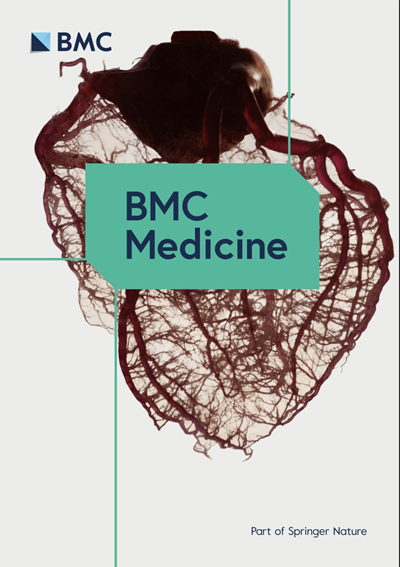Has multimorbidity and frailty in adult hospital admissions changed over the last 15 years? A retrospective study of 107 million admissions in England
IF 7
1区 医学
Q1 MEDICINE, GENERAL & INTERNAL
引用次数: 0
Abstract
Few studies have quantified multimorbidity and frailty trends within hospital settings, with even fewer reporting how much is attributable to the ageing population and individual patient factors. Studies to date have tended to focus on people over 65, rarely capturing older people or stratifying findings by planned and unplanned activity. As the UK’s national health service (NHS) backlog worsens, and debates about productivity dominate, it is essential to understand these hospital trends so health services can meet them. Hospital Episode Statistics inpatient admission records were extracted for adults between 2006 and 2021. Multimorbidity and frailty was measured using Elixhauser Comorbidity Index and Soong Frailty Scores. Yearly proportions of people with Elixhauser conditions (0, 1, 2, 3 +) or frailty syndromes (0, 1, 2 +) were reported, and the prevalence between 2006 and 2021 compared. Logistic regression models measured how much patient factors impacted the likelihood of having three or more Elixhauser conditions or two or more frailty syndromes. Results were stratified by age groups (18–44, 45–64 and 65 +) and admission type (emergency or elective). The study included 107 million adult inpatient hospital episodes. Overall, the proportion of admissions with one or more Elixhauser conditions rose for acute and elective admissions, with the trend becoming more prominent as age increased. This was most striking among acute admissions for people aged 65 and over, who saw a 35.2% absolute increase in the proportion of admissions who had three or more Elixhauser conditions. This means there were 915,221 extra hospital episodes in the last 12 months of the study, by people who had at least three Elixhauser conditions compared with 15 years ago. The findings were similar for people who had one or more frailty syndromes. Overall, year, age and socioeconomic deprivation were found to be strongly and positively associated with having three or more Elixhauser conditions or two or more frailty syndromes, with socioeconomic deprivation showing a strong dose–response relationship. Overall, the proportion of hospital admissions with multiple conditions or frailty syndromes has risen over the last 15 years. This matches smaller-scale and anecdotal reports from hospitals and can inform how hospitals are reimbursed.在过去 15 年中,成人入院治疗中的多病症和虚弱情况是否发生了变化?对英格兰 1.07 亿例入院病例的回顾性研究
很少有研究对医院环境中的多病症和虚弱趋势进行量化,而对人口老龄化和患者个体因素的影响程度进行报告的研究就更少了。迄今为止的研究往往侧重于 65 岁以上的人群,很少涉及老年人,也很少按计划内和计划外活动对研究结果进行分层。随着英国国家医疗服务系统(NHS)积压工作的恶化,以及有关生产率的争论,了解这些医院的发展趋势至关重要,以便医疗服务能够满足这些需求。我们提取了 2006 年至 2021 年间成人住院病人的住院记录。多病症和虚弱程度是通过埃利克豪斯多病症指数和宋氏虚弱程度评分来衡量的。报告了患有 Elixhauser 病症(0、1、2、3+)或虚弱综合征(0、1、2+)的年度比例,并对 2006 年和 2021 年的患病率进行了比较。逻辑回归模型测量了患者因素对患有三种或三种以上埃利克豪斯病症或两种或两种以上虚弱综合征的可能性的影响程度。研究结果按年龄组(18-44 岁、45-64 岁和 65 岁以上)和入院类型(急诊或择期入院)进行了分层。研究包括 1.07 亿例成人住院病例。总体而言,在急诊和择期入院的患者中,患有一种或多种埃利克豪斯病症的比例都有所上升,随着年龄的增长,这一趋势变得更加明显。这在 65 岁及以上人群的急诊入院病例中最为明显,他们中患有三种或三种以上艾利豪瑟病症的入院比例绝对值增加了 35.2%。这意味着,与15年前相比,在研究的最后12个月中,至少患有三种Elixhauser病症的人住院次数增加了915,221次。对于患有一种或多种虚弱综合征的人来说,研究结果与此类似。总体而言,年份、年龄和社会经济贫困程度与患有三种或三种以上易感体质或患有两种或两种以上虚弱综合征有密切的正相关关系,其中社会经济贫困程度呈现出强烈的剂量-反应关系。总体而言,在过去 15 年中,患有多种疾病或虚弱综合征的入院人数比例有所上升。这与医院的小规模轶事报告相吻合,并可为医院的报销方式提供参考。
本文章由计算机程序翻译,如有差异,请以英文原文为准。
求助全文
约1分钟内获得全文
求助全文
来源期刊

BMC Medicine
医学-医学:内科
CiteScore
13.10
自引率
1.10%
发文量
435
审稿时长
4-8 weeks
期刊介绍:
BMC Medicine is an open access, transparent peer-reviewed general medical journal. It is the flagship journal of the BMC series and publishes outstanding and influential research in various areas including clinical practice, translational medicine, medical and health advances, public health, global health, policy, and general topics of interest to the biomedical and sociomedical professional communities. In addition to research articles, the journal also publishes stimulating debates, reviews, unique forum articles, and concise tutorials. All articles published in BMC Medicine are included in various databases such as Biological Abstracts, BIOSIS, CAS, Citebase, Current contents, DOAJ, Embase, MEDLINE, PubMed, Science Citation Index Expanded, OAIster, SCImago, Scopus, SOCOLAR, and Zetoc.
文献相关原料
| 公司名称 | 产品信息 | 采购帮参考价格 |
|---|
 求助内容:
求助内容: 应助结果提醒方式:
应助结果提醒方式:


